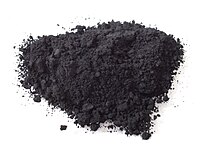
Photo from wikipedia
In the present study, micromechanical modeling methods, such as Pukanszky model, were used to predict the interfacial properties of polypropylene (PP)/carbon quantum dot (CQD) nanocomposite fibers. Then, the results were… Click to show full abstract
In the present study, micromechanical modeling methods, such as Pukanszky model, were used to predict the interfacial properties of polypropylene (PP)/carbon quantum dot (CQD) nanocomposite fibers. Then, the results were correlated with the tensile properties obtained experimentally. Accordingly, the effects of nanoparticle size, compatibilizer, and nanoparticle loading on the interphase properties of the nanocomposite fibers were investigated based on the models. A design of experiments based on the Taguchi method was applied. It was found that the volume fraction and the thickness of the interphase were related to the nanofiller size and the volume fraction of the nanofiller. The volume fraction and the thickness of the interphases were enhanced in the samples containing the compatibilizer. Also, the strength of the interphase was directly correlated to the interfacial interaction expressed by the value of “B” in the Pukanszky model, while it was decreased with increasing the thickness of the interphase.
Journal Title: Colloid and Polymer Science
Year Published: 2018
Link to full text (if available)
Share on Social Media: Sign Up to like & get
recommendations!